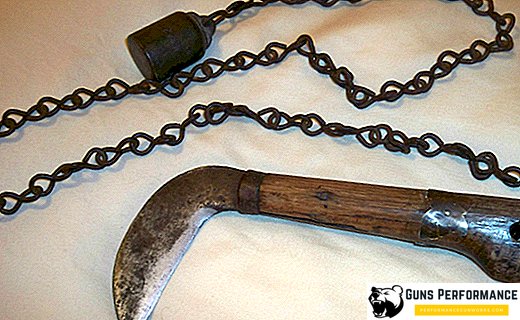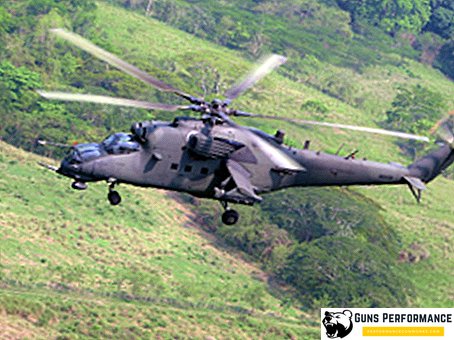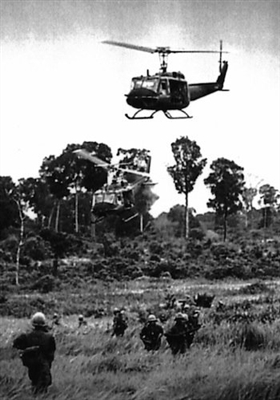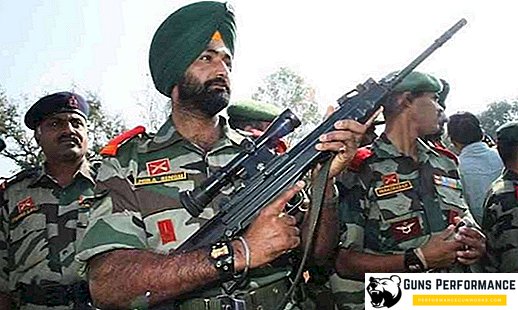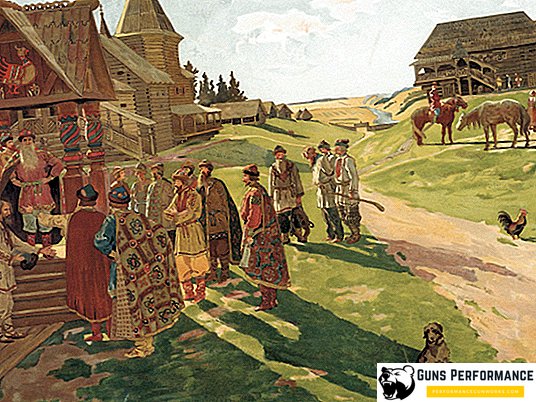The Balkans have always been traditionally considered too complicated and therefore no less explosive corner of Europe. Ethnic, political and economic contradictions are not resolved here as yet. However, a little more than 100 years ago, when the political picture not only in the Balkans, but throughout the rest of Europe was somewhat different, it was in this region that two wars thundered, which became tangible harbingers of a larger conflict.
Background of the conflict: what led to it?
The roots of the Balkan wars should be sought not even in the Turkish enslavement of the Balkan peoples, but earlier. So, the contradictions between the peoples were observed here during the times of Byzantium, when such strong states as Bulgaria and Serbia existed in the Balkans. The Ottoman invasion in a certain way united the Balkan Slavs against the Turks, who for almost five centuries became the main enemies of the Balkan Slavs.

After the rise of Balkan nationalism in the XIX century from the decrepit Ottoman Empire, Greece, Serbia, Montenegro and Bulgaria declared independence, which became its opponents. However, this did not mean that all the contradictions in the Balkans were resolved. On the contrary, in the Balkan Peninsula there were still a lot of lands for which the new states claimed. This circumstance made the conflict between the Ottoman Empire and its former possessions almost inevitable.
At the same time, the great European powers were also interested in weakening the Ottoman Empire. Russia, Italy, Austria-Hungary and France had views of a number of territories in Turkey and sought, weakening it with someone else’s hands, to join these territories. Thus, in 1908, Austria-Hungary succeeded in annexing Bosnia, which formerly belonged to the Ottoman Empire, and Italy in 1911 invaded Libya. Thus, the moment for the liberation of the Slavic lands from Ottoman rule was almost matured.
Russia played a major role in the formation of the anti-Turkish union. It was with her assistance that in March 1912 an alliance was concluded between Serbia and Bulgaria, which Greece and Montenegro soon joined. Although there were a number of contradictions between the countries of the Balkan Union, Turkey was the main adversary, which united these countries.
The Turkish government understood that the alliance between the Slavic states of the Balkans would be directed primarily against the Ottoman Empire. In this connection, in the autumn of 1912, military preparations began in the Balkan part of the country, which, by the way, were very much delayed. The plans of Turkey envisaged the defeat of the opponents in parts: at first it was planned to defeat Bulgaria, then Serbia, and then - Montenegro and Greece. For this purpose, the Turkish troops in the Balkan Peninsula were consolidated into two armies: the Western, located in Albania and Macedonia, and the Eastern, designed to hold Thrace and Istanbul. In total, the Turkish troops amounted to about 450 thousand people and 900 guns.

In turn, the Allies concentrated forces on the borders of the Ottoman Empire. It was planned to strike simultaneously, so that the Ottoman defense would collapse, and the country would suffer a crushing defeat. In this case, the war was supposed to last no more than a month. In total, the number of Allied troops was approximately 630,000 with 1,500 guns. The superiority was clearly on the side of the anti-Ottoman forces.
The war became a fact (October 1912)

However, an organized simultaneous strike was prevented by the premature attack of Montenegro. Thus, Montenegrin troops concentrated on the border, from the first days of October, were drawn into local clashes with the Turkish army. By October 8, these clashes predictably turned into a full-scale war, which was confirmed in a report to the Turkish Foreign Ministry, which announced the beginning of the war between Montenegro and the Ottoman Empire.
The Montenegrin army launched an offensive in a southerly direction, with the aim of seizing the territory of Albania, which the country claimed. And this offensive achieved some success: after 10 days, the troops advanced 25-30 kilometers, causing serious losses to the Turkish army.
On October 18, 1912 Serbia and Bulgaria declared war on the Ottoman Empire. October 19, they were joined by Greece. Thus, the First Balkan War began.
Bulgarian troops immediately rushed to the coast of the Aegean Sea, to seize part of Thrace, populated mainly by the Bulgarians, and to interrupt communication between the Eastern and Western Turkish armies. There were troops in front of the Bulgarian army who were not fully mobilized and did not manage to take field fortifications. These circumstances significantly played the Bulgarians on hand. As a result, already on the fourth day after the declaration of war (October 23), Bulgarian troops managed to block Edirne and come close to the town of Kirklareli (Eastern Thrace). Thus, there was a threat directly to the capital of the Ottoman Empire - Istanbul.
In the meantime, the Serbian and Montenegrin troops united into a consolidated group and launched an offensive in southern Serbia and Macedonia. On October 21, 1912, units of the 1st Army of Serbia approached the city of Kumanovo and prepared to capture it. However, there were also large Ottoman forces from the Western Army. Approximately 180 thousand Turks opposed 120 thousand Serbs, who were later to be joined by another 40 thousand soldiers. By the Serbian troops, the 2nd Army advanced as reinforcements from the Pristina region.
Turks attacked on October 23. Their daily attack, though achieved some success, but failed to overthrow the Serbian troops. Additional difficulties were caused by foggy weather, which prevented the effective use of artillery. Only at night, when the fog cleared, the artillery was brought into battle. In this case, the Serbs so successfully counterattacked that the results of the daytime attack of the Turks were essentially negated.

The next day, the Serbian forces launched an attack. The Turks were completely unprepared for this, which decided the outcome of the battle. As a result, the Turkish troops began to retreat deep into Macedonia, losing most of their artillery. The defeat of the Ottoman troops in the battle of Kumanovo opened the way for Serbs and their allies to Macedonia, Albania and Epirus.
The war broke out (October-November 1912)
Meanwhile, the troops of the 1st and 3rd Bulgarian armies received the task of seizing the town of Kirklareli (or Lozengrad). Having mastered this city, the Bulgarians could cut off the Western Turkish army from the metropolis and significantly simplify the Allies' task of mastering the Turkish territories in the western Balkans.
Ottoman command had high hopes for the defense of Kirklareli. The German garrison was inspected by German General von der Goltz, who gave very optimistic forecasts regarding defense. However, the Turkish troops themselves were not sufficiently prepared, and their morale made one want something better.
As a result of the battle under the walls of the city, the Bulgarian troops with skillful maneuver managed to cut off the main part of the Turkish troops from the city and enter the almost empty city on October 24, 1912. This defeat seriously demoralized not only the troops, but also the government of the Ottoman Empire. In turn, in Bulgaria, the victory at Lozengrad caused a great patriotic rise. After persistent battles, Bulgarian troops approached the Chataldzhinskoy defensive line of the Turks, where they stopped.
The Eastern Turks after the defeat in the battle of Kumanovo began to retreat first to Skopje, and then to the city of Bitola. However, here the Turkish troops were intercepted by the Serbs, and a bloody battle ensued. As a result, the Turkish Western Army was annihilated in early November 1912 by the joint efforts of the Serbian and Bulgarian troops.
At this time, the Greek troops, who began active hostilities on October 18, managed to seize the city of Thessaloniki and approached southern Macedonia. At the same time, the Greek fleet was marked by several victories over the Ottoman fleet, which also raised the spirit of the Balkan alliance.
After the actual destruction of the Western and Eastern Turkish armies, the decisive front of the First Balkan War was the Chataldzhinsky direction. Here, from early to mid-November, the Bulgarian troops made a number of unsuccessful attempts to break through the Turkish defenses, but failed to do so. The situation is at a standstill.
Peace talks or necessary respite? (November 1912 - May 1913)
In November 1912, on the fronts of the First Balkan War, a situation developed in which a truce was simply inevitable. The troops of the Balkan alliance were bogged down in the siege of a number of Ottoman fortresses, and the Ottoman troops had practically no forces for active operations. There was also the threat of intervention in the conflict of Austria-Hungary, which pursued its interests in the Balkans.
Thus, as early as November, hostilities virtually along the entire front line ceased, and on December 26 peace negotiations began in London. These negotiations were rather difficult, mainly because of the unwillingness of Turkey to bear heavy territorial losses. At the same time, political tension only grew in Turkey itself, which resulted in a coup on January 23, 1913, when the Young Turks took power in the country, a movement that sought to regain the former prestige and power of the Ottoman Empire. As a result of this coup, the Ottoman Empire ceased to participate in peace negotiations, and hostilities of the First Balkan War resumed at 7 pm on February 3, 1913.
After that, the Ottoman troops, who had time to concentrate in the area of Chataldzhi (Istanbul direction) during the truce, launched an offensive against the Bulgarian troops. However, the density of troops here was great, and the attempt to break through was reduced to positional battles, bogged down in which, the Turkish army was defeated.

In March 1913, the Bulgarian troops, having exhausted the Turks besieged in Adrianople, suddenly began to storm the fortress. The Turkish soldiers were taken by surprise, which decided the outcome of the assault. March 13 Bulgaria seized Adrianople.
Simultaneously with the events in the eastern Balkans, the siege of Shkodra continued by the Montenegrin troops. The city was besieged at the very beginning of the war, but thanks to the stubborn defense of the Turks continued to hold. By the spring, the Ottoman garrison of Shkodra was already exhausted enough that its new commander Essad Pasha (the previous one, Huseyn Riza Pasha, was killed) began negotiations on surrendering the fortress to the Montenegrins. The result of these negotiations was the occupation of the city of Shkodra by Montenegro on April 23, 1913.
The end of the war or the first act? (May-June 1913)
Since the beginning of May, a lull has actually arrived at the front, which was used to resume the peace talks in London. This time even the Young Turks understood that the war was actually lost for the Ottoman Empire, and the country needed a break.
May 30 peace treaty was signed. According to him, almost all the territories lost by the Ottoman Empire, except for Albania, were transferred to the countries of the Balkan Union. Albania passed under the control of the great powers (Italy and Austria-Hungary), and its future was to be decided in the near future. Turkey also lost Crete, which passed to Greece.
Also, one of the main points of the London Peace Treaty was that the countries of the Balkan Union themselves would divide the conquered territories among themselves. This point was the cause of many strife and, ultimately, the split of the Balkan Union. It is possible that this item was adopted with the active assistance of Germany or Austria-Hungary, who did not want to strengthen the pro-Russian Balkan union.
Immediately after the war between yesterday's allies, the first disputes arose. So, the main issue was the dispute regarding the division of Macedonia, which had views of both Serbia and Bulgaria and Greece. The Bulgarian government dreamed of Great Bulgaria (which caused tensions in relations with other countries of the Balkan Union); in Serbia, as a result of the victory, the society was considerably radicalized. There was also an open dispute between Bulgaria and Greece regarding the city of Thessaloniki and Thrace. In view of all these disputes, the situation was such that Bulgaria was alone against all of its former allies.
The active diplomatic efforts of Germany and Austria-Hungary, which inspired the Serbian government that Serbia has more rights to Macedonia, added fuel to the fire. At the same time the Bulgarian government declared the same, but diametrically opposite. Only Russian diplomats called for a diplomatic solution of the issues, but it was too late: the new conflict matured rather quickly, and the peace treaty in London had not yet been signed, as the Second Balkan War already loomed on the horizon.
June 1913 is characterized by the deployment and deployment of troops on the Serbian-Bulgarian border. In this aspect, Serbia had a number of advantages, since a large part of the Bulgarian troops were being transferred from the Chataldzhi region, which took time. Serbian troops during the First Balkan War acted not far, therefore they managed to concentrate earlier.
At the end of June, the Serbian and Bulgarian troops came in contact, and the situation became critical. Russia made a last attempt to preserve peace and convened talks in St. Petersburg. However, these negotiations were not destined to come true: on June 29, Bulgaria, without declaring war, attacked Serbia.
New War (June-July 1913)

Bulgarian troops launched an offensive against Macedonia by the forces of the 4th Army. Initially, they were successful, and managed to crush the advanced parts of the Serbs. However, then the 1st Serbian army moved towards the Bulgarians, which stopped the rapid advance of the enemy troops. In July, the Bulgarian army was gradually "squeezed out" from Serbian Macedonia.
Also on June 29, the 2nd Bulgarian Army launched an offensive in the direction of the city of Thessaloniki in order to occupy the city and defeat the Greek army. However, here the Bulgarians, after the initial success, expected defeat. The Greek army attempted to encircle the Bulgarian army near the town of Kilkis, but this only led to its ousting back to the border. The Bulgarian attempt to counterattack also ended in failure, and after a series of defeats, the 2nd Bulgarian Army was demoralized and began to retreat. The Greek troops managed to seize a number of settlements in Macedonia and Thrace (Strumica, Kavala) and came into contact with the 3rd Serbian army.
Bulgaria was stuck in the conflict, and its hopes for a quick victory were not justified. The government understood that there was little chance of victory, but continued fighting in the hope of fatigue of Serbia and Greece and the most acceptable peace. However, third countries did not fail to take advantage of this difficult situation of the country.
The role was also played by the difficult relations of Bulgaria with Romania, which had long claimed South Dobruja, as well as the Ottoman Empire (for obvious reasons). Taking advantage of the fact that Bulgaria was drawn into heavy fighting, these countries began active hostilities against it. July 12, 1913 Turkish troops crossed the border with Bulgaria in Thrace. On July 14, Romanian troops crossed the border of Bulgaria.
By July 23, the Turkish army succeeded in seizing Adrianople and defeating almost all Bulgarian troops in Thrace. Romania did not meet resistance due to the fact that all Bulgarian forces were concentrated on the Serbian and Greek fronts. Romanian troops freely moved to the capital of Bulgaria - the city of Sofia.
Understanding all the hopelessness of further resistance, on July 29, 1913, the Bulgarian government signed an armistice. Balkan wars are over.
The results of wars and the loss of the parties
On August 10, 1913, a new peace treaty was signed in Bucharest. According to him, Bulgaria lost a number of territories in Macedonia and Thrace, leaving behind only a part of eastern Thrace with the city of Kavala. Also, the territories in Dobrudja were rejected in favor of Romania. Serbia has withdrawn all the Macedonian territories, rejected from Turkey as a result of the London Peace Treaty. Greece secured the city of Thessaloniki and the island of Crete.
Также 29 сентября 1913 года между Болгарией и Турцией в Стамбуле был подписан отдельный мирный договор (так как Турция не являлась участницей Балканского союза). Он возвращал Турции часть Фракии с городом Адрианополь (Эдирне).
Точная оценка потерь стран отдельно во время Первой и Второй Балканских войн существенно затрудняется тем, что временной промежуток между этими конфликтами весьма мал. Именно поэтому чаще всего оперируют суммарными данными о потерях.
Так, потери Болгарии в ходе обеих войн составили примерно 185 тысяч человек убитыми, ранеными и умершими от ран. Сербский потери составили примерно 85 тысяч человек. Греция потеряла 50 тысяч человек убитыми, умершими от ран и болезней и ранеными. Черногорские потери были самыми маленькими и составили около 10,5 тысяч человек. Османская империя же понесла наибольшие потери - примерно 350 тысяч человек.
Столь высокие потери Болгарии и Османской империи объясняются тем, что обе эти страны в разных этапах конфликтов воевали против нескольких стран, уступая им численно. Также основная тяжесть боёв в Первую Балканскую войну также легла именно на Болгарию и Турцию, что и привело к их большим жертвам и, как следствие, большему их истощению.
Среди факторов, повлиявших на поражение Турции, а затем и Болгарии, следует указать:
- Неудачное сосредоточение войск Османской империи накануне Первой Балканской войны (связь между Западной армией и метрополией прервалась в первые недели конфликта);
- Амбициозные планы османского (а затем и болгарского) командования, которые были, по сути, неосуществимы;
- Война против нескольких стран в одиночку, что, при имевшихся и у Османской империи, и у Болгарии ресурсах было равносильно поражению;
- Напряжённые отношения с невоюющими соседями. Наиболее плачевным образом это проявилось для Болгарии в 1913 году.
В результате Балканских войн на Балканском полуострове появилась новая серьёзная сила - Сербия. Однако ряд проблем, связанных прежде всего с интересами великих держав в этом регионе, так и остался нерешённым. Именно эти проблемы и привели в конечном итоге к кризису, переросшему вскоре в Первую мировую войну. Таким образом, Балканские войны не сумели сгладить ситуацию в регионе, но и в конечном счёте лишь её усугубили.



